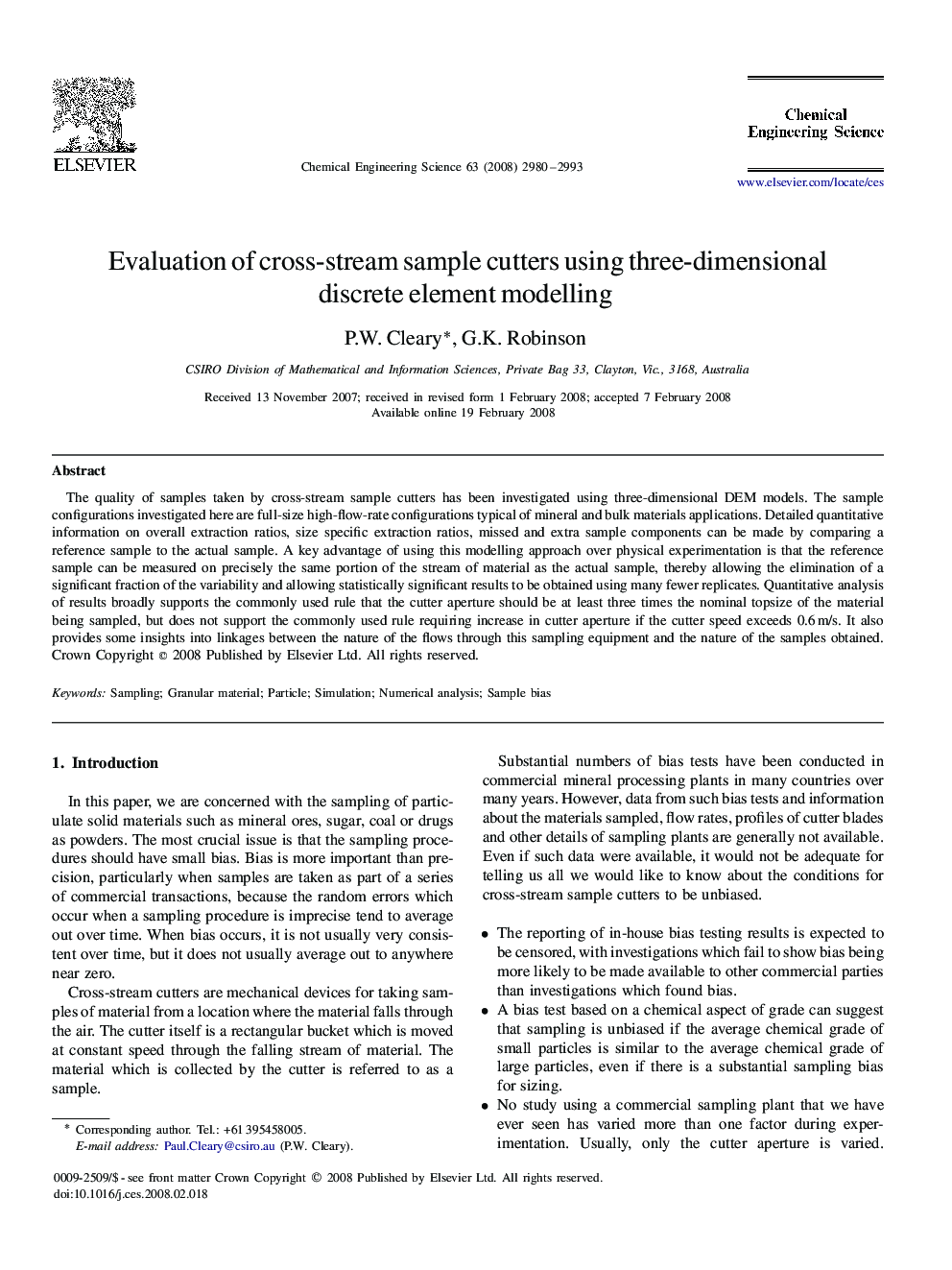| کد مقاله | کد نشریه | سال انتشار | مقاله انگلیسی | نسخه تمام متن |
|---|---|---|---|---|
| 158210 | 456999 | 2008 | 14 صفحه PDF | دانلود رایگان |

The quality of samples taken by cross-stream sample cutters has been investigated using three-dimensional DEM models. The sample configurations investigated here are full-size high-flow-rate configurations typical of mineral and bulk materials applications. Detailed quantitative information on overall extraction ratios, size specific extraction ratios, missed and extra sample components can be made by comparing a reference sample to the actual sample. A key advantage of using this modelling approach over physical experimentation is that the reference sample can be measured on precisely the same portion of the stream of material as the actual sample, thereby allowing the elimination of a significant fraction of the variability and allowing statistically significant results to be obtained using many fewer replicates. Quantitative analysis of results broadly supports the commonly used rule that the cutter aperture should be at least three times the nominal topsize of the material being sampled, but does not support the commonly used rule requiring increase in cutter aperture if the cutter speed exceeds 0.6 m/s. It also provides some insights into linkages between the nature of the flows through this sampling equipment and the nature of the samples obtained.
Journal: Chemical Engineering Science - Volume 63, Issue 11, June 2008, Pages 2980–2993